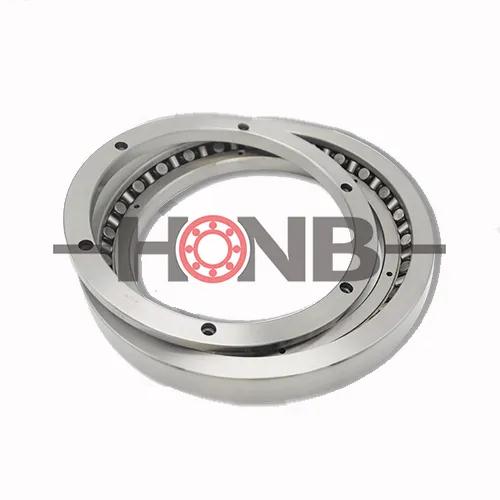Various types of bearings have different characteristics due to their different designs. Due to the variability and complexity of bearing installation sites and application occasions, there is no fixed mode to choose bearing types. In order to adapt to the specific installation position and application conditions of a certain host when selecting the bearing type, it is suggested to consider the following main factors comprehensively.
Mechanical design, generally determine the size of the shaft, and then select bearings according to the size of the shaft. Usually, the small shaft selection of ball bearings; Large shaft selection of cylindrical roller bearings, self-aligning roller bearings, tapered roller bearings (sometimes also can choose ball bearings). If the radial space of the bearing installation part is limited, the bearing with smaller radial section height should be used. Such as needle roller bearings, some series of deep groove ball bearings, angular contact ball bearings, cylindrical or self-aligning roller bearings and thin wall bearings. If the axial space of the bearing installation part is limited, smaller width size bearings can be used.
Load size is usually the determining factor in selecting bearing size. Roller bearings have greater bearing capacity than ball bearings with the same dimensions. Usually ball bearings are suitable for light or medium loads, roller bearings are suitable for bearing heavy loads.
Pure radial load can use deep groove ball bearings, cylindrical roller bearings. Pure axial load can choose thrust ball bearing, thrust cylindrical roller bearing. When there is radial load and axial load (combined load), angular contact ball bearings or tapered roller bearings are generally used. If the radial load is large and the axial load is small, deep groove ball bearings and cylindrical roller bearings with inner and outer rings can be selected. If there is also large deformation of shaft or shell and poor installation of neutral, self-aligning ball bearings and self-aligning roller bearings can be selected. If the axial load is large and the radial load is small, the thrust angular contact ball bearing and four-point contact ball bearing can be selected. If self-aligning performance is also required, thrust self-aligning roller bearings can be selected.
Working speed
The working speed of rolling bearings mainly depends on its allowable operating temperature. Bearings with low friction resistance and less internal heat are suitable for high-speed operation. When only bearing radial load, using deep groove ball bearings and cylindrical roller bearings can achieve higher speed, if bearing combined load, should choose angular contact ball bearings. Specially designed high-precision angular contact ball bearings can achieve extremely high speed. The speed of all kinds of thrust bearings is lower than that of radial bearings.

- YRT rotary table bearing
- YRTS rotary table bearing (high speed series)
- YRTM with integral angular measuring system series
- ZKLDF axial angular contact ball bearing series
- RA series crossed roller bearing
- SX series crossed roller bearing
- CRBH series crossed roller bearing
- RE series crossed roller bearing
- RU series crossed roller bearing
- RB series crossed roller bearing
- XR/JXR series crossed taper roller bearing
- Crossed roller bearing

✉️ bearing20@hyzcgroup.com
📞 +86 15236685001





